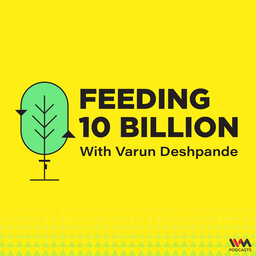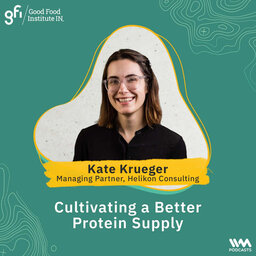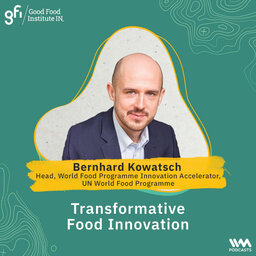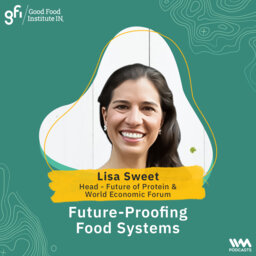S02 E07: Tackling Malnutrition with Smart Protein: A Glimpse of the Future
Feeding 10 Billion
By the year 2050 we will have 10 billion people on our planet - a sixth of whom will be in India. If we want to feed all 10 billion of us in a sustain…Smart protein, if done right, can be a big win for the planet. By now, hopefully, it is clear that foods that replace animal-sourced meat, eggs, and dairy tend to use fewer resources, do not contribute to rising greenhouse gas emissions, and diminish the risk of zoonotic diseases and antibiotic resistance. But equally exciting is the sector’s potential to tackle issues that we grapple with and mention on Feeding 10 Billion all the time - like malnutrition. India faces the tremendous challenge of being home to a third of the world’s total stunted children, and half of all under-5 child mortality in the country is due to undernutrition. Poor nutrition in the first 1000 days of a child’s life is crucial to tackling this issue, as is a young mother’s health. Irrespective of whether they feed their kids breastmilk or formula, (and face guilt over whatever they choose), if mothers are grappling with anemia or poor nutrition, their kids do not have access to the nutrients they so badly need. Meanwhile, over 10% of cow’s milk production globally is actually absorbed by the infant nutrition market. Our guests this week, (which is timed perfectly with World Breastfeeding Week), have a solution that could allow mothers to feed their children actual human breast milk without worrying about a baby’s ability to latch, their own nutrition, or supplementing inadequate feed with formula made from animal-sourced milk. All while giving their babies the nutrients they desperately need. Michelle Egger is the CEO, and Co-Founder of BioMilq, while Leila Strickland is the CSO, and Co-Founder. They are a women-owned, science-led, and parent-centered infant nutrition company producing breast milk cultivated from cells!
NOTES:
Companies Mentioned:
Scientific Definitions:
Cellular Physiology: Cellular physiology is concerned with the mechanism of transport of nutrients, ions, and water into and out of the cell, as well as how cells communicate with each other through signaling pathways, or respond to external cues.
Epithelial/ Epithelium (Intestinal, Kidney, Corneal, Mammary): Membranous tissue composed of one or more layers of cells separated by very little intercellular substance and forming the covering of most internal and external surfaces of the body and its organs.
Human milk oligosaccharides (HMO, also known as human milk glycans): Sugar molecules that are part of the oligosaccharides group and can be found in high concentrations exclusively in human breast milk.
Bibliography:
Bill Gates’ climate-change investment firm bets on lab-produced breast milk, CNBC
BIOMILQ Could Be The Next Major Food Disruptor: Getting Real About Entrepreneurship With Co Founder And CEO Michelle Egger, Forbes
Breakthrough: Two women producing breast milk - outside the body, Medium
The Business Case for Investment in Nutrition, Chatham House
WHO and UNICEF warn of a decline in vaccinations during COVID-19, WHO
Overview of Malnutrition in India
WHO on Nutrition and Breastfeeding
For Further Reading:
Feeding Lessons to tackle malnutrition, Frontline
Unfolding the Human Milk Microbiome Landscape in the Omics Era, Frontiers in Food Microbiology
Breastfed Right: How Shrirampur’s Babies Escape Malnutrition: IndiaSpend
 Feeding 10 Billion
Feeding 10 Billion


